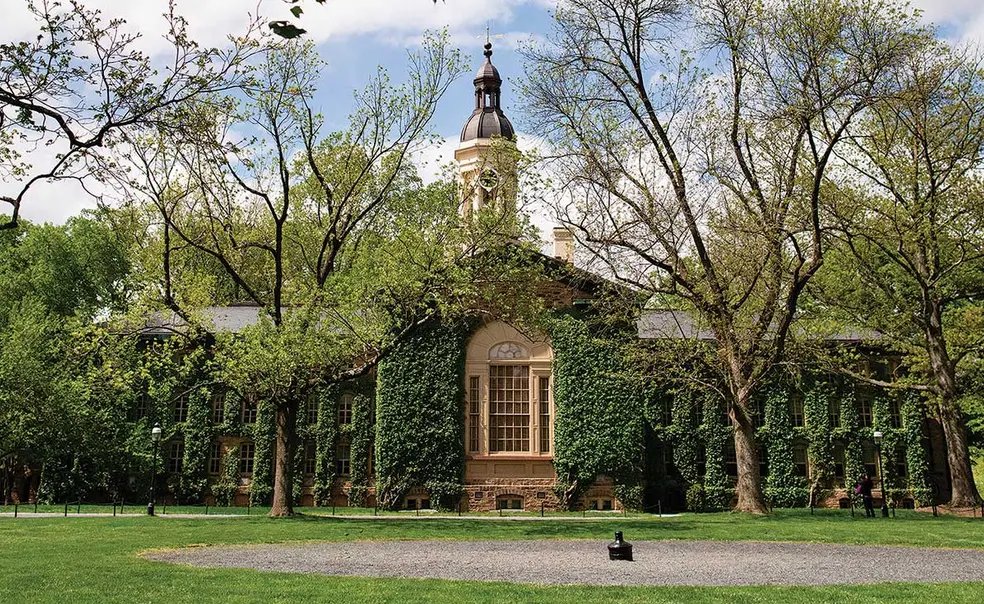Princeton Returns to Remote Classes for the Fall
As the spread of COVID-19 continues, Princeton revises plans for fall semester
As COVID-19 continued to spread across the United States in August, President Eisgruber ’83 moved to all-remote fall-semester instruction, reversing an earlier plan to have freshmen and juniors on campus. The “unexpectedly high and persistent infection rates” across the country and growing restrictions in New Jersey were two main factors in the decision, Eisgruber said in an interview with PAW.
“On the one hand, I regret having had to make the choice to pull back from our plans,” Eisgruber said in the interview, in mid-August, “but I’m very glad we gave ourselves the opportunity to do so, because I must say nothing I’ve seen in the intervening 10 days makes me think we should have moved in another direction.”
Princeton was one of several universities, including Johns Hopkins and the University of Pennsylvania, that altered their fall plans in the weeks before the start of the semester. Some colleges that brought students to campus reported COVID-19 outbreaks shortly after the semester began and sent the students home.
With Princeton undergraduates learning remotely, an already-unusual semester will look very different than what students had imagined and hoped for during the summer. A May survey administered by the Undergraduate Student Government (USG) found many students were unhappy with how virtual learning went in the spring.
In the fall, some classes will be taught live while other faculty have opted to prerecord lectures. One change from the spring semester is that classes and precepts will be offered at new times (from 4:30 p.m. to 7:30 p.m. Eastern) to accommodate those in different time zones.
“There’s been a lot of consternation and concern, and I think students are rightly grieving what they’ll lose by not being able to be present on campus,” said Jill Dolan, dean of the college. While virtual learning cannot replace an in-person experience, she said, faculty members are working hard to give students the best possible experience.
Many faculty members have worked with the McGraw Center for Teaching and Learning to enhance their courses for a virtual format, Dolan said. The center has developed new course-design templates and has given lessons on using tools such as video production, podcasting, and annotating videos for lectures. In the sciences, some faculty have mailed lab kits to the homes of students so they have access to needed materials.
Steven Kelts, a lecturer teaching a politics class this fall, said he created a studio at home to record lectures over the summer — taking up to eight hours a day to record one class. “I’m recording with three different camera angles to signify different things ... and I’m video-editing and then adding graphics to illustrate what I’m doing,” he said. Kelts took video-editing courses in June to learn these skills.
There will be virtual workshops, meetings with residential-college advisee groups, and small-group experiences to help first-year students foster connections. Dolan said the University also hopes to connect students with alumni in their area to create community.
It’s unclear whether students will be satisfied. “Students are definitely disappointed that they’re not going to have the potential for an in-person experience come the fall,” said Julia Garaffa ’23, U-Council chair for the USG. High on the list of student concerns, she said, are grading, the quality of academics, and the overall college experience.
In an Aug. 18 memo to faculty, Dolan announced that 713 students — about 13 percent of undergraduates — opted to defer or take a leave of absence, including 217 freshmen. All were approved to return to campus for the fall 2021 semester.
Allison Slater Tate ’96, mother of Mason Tate ’24, said she wasn’t surprised by the University’s decision to go all-remote and had encouraged her son to take a leave of absence. “He doesn’t want to wait,” she said. “He feels like he wants his life to start. ... His father and I are very worried that at some point he’ll figure out that he’s lost a year on campus and will regret it, but we can’t make that decision for him.”
Graduate students have returned to campus. Some 265 undergrads were approved to return as well, including members of Army ROTC, seniors who must be there to conduct thesis work, and students who need emergency housing. They are living in Spelman Halls and Whitman and Butler colleges. Tuition has been cut by 10 percent for the academic year.
Those on campus are required to follow public-health guidelines and protocols. Students from states on New Jersey’s travel-advisory list must quarantine in their rooms for 14 days. Students, faculty, and staff members who are on campus for at least eight hours per week and have no COVID-19 symptoms must take a saliva test weekly. The results will be received within a few days, according to a University statement. This procedure is separate from testing for those who are showing COVID-19 symptoms.
Robin Izzo, executive director of environmental health and safety, said the University had been prepared for students to return in the fall, making physical changes such as installing plexiglass in dining areas and building walls in open office spaces.
Eisgruber said the University will continue to monitor the spread of COVID-19 and hopes to find a way to bring students back in the spring.













1 Response
Amanda Foreman p’24
5 Years AgoStudying Optimum Number of Students for Discussions
One of the biggest complaints from students who experienced virtual learning in the spring was that the student zoom ration was too high. While a lecture can have thousands of listeners, a seminar, language course, or discussion session can only have a small number of speakers. It is now grossly apparent that virtual classes quickly become painful and futile if just a tiny minority has any meaningful participation. Has the University conducted any studies on what the optimum number should be?